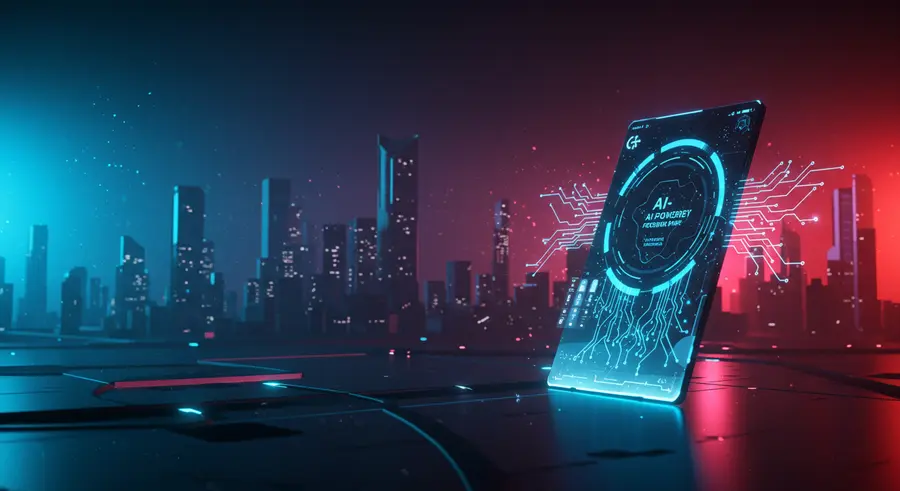Appearance

Welcome, tech pioneers and web enthusiasts! 👋 Today, we're diving deep into an exhilarating frontier where the adaptability of Progressive Web Apps (PWAs) meets the transformative power of Artificial Intelligence (AI) and advanced hardware integration. This isn't just about making websites better; it's about creating a truly intelligent, adaptive, and immersive web experience that feels indistinguishable from native applications, and in many cases, surpasses them!
What are Progressive Web Apps (PWAs)? A Quick Revisit
Before we fully immerse ourselves in the AI synergy, let's quickly recap what makes PWAs so revolutionary. At their core, PWAs are web applications that leverage modern web capabilities to deliver an app-like experience to users. Think of them as the best of both worlds: the broad reach of the web combined with the rich features of native apps.
Key characteristics include:
- ⚡️ Reliability: Thanks to Service Workers, PWAs can cache resources, enabling instant loading and offline functionality, even in flaky network conditions. No more "You are offline" dinosaur games!
- 🚀 Speed: Optimized performance ensures swift interactions and smooth animations, leading to a frictionless user experience.
- 📱 Engagment: PWAs are installable to the user's home screen, offer push notifications for re-engagement, and can access various device features.
If you want to explore more about the foundational aspects of PWAs, check out our comprehensive guide on Progressive Web Apps.
The AI Synergy: Powering the Next Generation of PWAs
Now, let's inject some intelligence into our PWAs! The integration of AI transforms a capable web application into a smart, proactive, and hyper-personalized digital assistant. Imagine a PWA that doesn't just respond to your commands but anticipates your needs, learns from your behavior, and adapts its interface and content in real-time. This is the promise of AI-powered PWAs.
Here's how AI is enhancing PWAs:
🧠 Hyper-Personalization: AI algorithms can analyze user data (browsing history, preferences, interactions) to deliver highly personalized content, recommendations, and user interfaces.
- Example: An e-commerce PWA could use AI to recommend products based on your past purchases and even predict what you might need next, or a news PWA could curate articles based on your reading habits and current events of interest.
🗣️ Intelligent Automation & Predictive Capabilities: AI can automate tasks, provide predictive insights, and streamline workflows within the PWA.
- Example: A travel PWA might use AI to predict flight delays and automatically suggest alternative routes, or an online learning PWA could adapt the learning path based on your progress and identify areas where you might struggle.
🖼️ Enhanced Multimedia & Content Generation: AI can process and generate multimedia content on the fly, improving user engagement.
- Example: Image recognition for automated tagging in a photo gallery PWA, or AI-driven content summarization for lengthy articles, allowing users to get the gist quickly.
🔗 Advanced Hardware Integration: This is where the web truly blurs the lines with native apps. Modern web APIs, combined with AI, enable PWAs to tap into device hardware for richer experiences.
- Sensors: Leveraging GPS for location-aware services, accelerometers for gesture recognition, or ambient light sensors for adaptive UI themes.
- Camera & Microphone: AI-powered facial recognition for secure login, real-time language translation via microphone input, or augmented reality (AR) experiences.
- NFC & Bluetooth: Seamless device pairing for IoT control, tap-to-pay functionalities, or connecting with wearables for health monitoring.
- Neural Processing Units (NPUs): With WebNN and WebGPU, PWAs can offload AI model inference to dedicated NPUs on devices, enabling lightning-fast on-device AI processing without hitting cloud servers. This means privacy-preserving AI and real-time responsiveness.
Real-World Impact and Transformative Use Cases
The blend of AI and advanced hardware access in PWAs is opening doors to revolutionary applications across industries:
- Healthcare: PWAs can become personal health assistants, using AI to analyze sensor data from wearables to detect anomalies, provide personalized health advice, and even assist in remote diagnostics leveraging camera and microphone for virtual consultations.
- Retail: Augmented reality shopping experiences (using camera and AI to visualize products in your home before buying), intelligent chatbots for customer support, and highly personalized in-store navigation using location services.
- Education: Adaptive learning platforms that adjust curriculum difficulty based on student performance, real-time language translation for diverse classrooms, and AI-powered feedback on assignments.
- Manufacturing & IoT: PWAs can serve as control panels for smart factories, using AI to monitor equipment health, predict maintenance needs, and visualize data from thousands of sensors in real-time, all accessible from any device.
Challenges and the Road Ahead
While the future is bright, integrating AI and advanced hardware into PWAs also presents challenges:
- Privacy & Security: Handling sensitive user data for personalization and hardware access requires robust security measures and transparent privacy policies.
- Performance Optimization: Running complex AI models, especially on-device, demands careful optimization to ensure smooth performance across a wide range of devices.
- Browser Compatibility: While modern browsers are rapidly adopting new web APIs, ensuring consistent behavior across all platforms remains a consideration.
Despite these, the rapid evolution of web standards and browser capabilities, coupled with advancements in AI, suggests a future where the distinction between web and native applications will become increasingly irrelevant.
Conclusion: Your PWA, Your Intelligent Companion
The fusion of AI with Progressive Web Apps, amplified by advanced hardware integration, marks a pivotal moment in web development. We're moving beyond static web pages to create dynamic, intelligent, and deeply integrated experiences that understand and adapt to the user.
As developers, this opens up a universe of possibilities to build truly innovative and impactful applications. The intelligent web is not just a concept; it's rapidly becoming a reality, empowering us to craft experiences that are more personal, efficient, and engaging than ever before.
Stay curious, keep building, and let's together unleash the full potential of the intelligent web! 🌐💡